[ad_1]
It was within the aftermath of the drought within the state of Maharashtra throughout 2013-2016, the worst to hit in 40 years, {that a} basic shift happened within the thoughts of Nutan Upendra Desai aka Nutanben, now 51.
In June 2016, when she discovered herself in distant Ambajogai in Beed district to supervise her workforce’s water rejuvenation work, she witnessed what she thought existed solely in movies.
The parched and cracked earth, the emaciated and undernourished males, ladies and youngsters and the cattle dying from the dearth of water, all modified her perspective. As if these situations weren’t sufficient, she found that the folks there have been succumbing to water-borne illnesses as a result of high quality of water they have been consuming.
What shocked and anxious her extra was that the folks residing there have been consuming and consuming water that ordinarily one would even be hesitant to the touch. The soiled, fungus-filled inexperienced water with black molecules floating round was greater than only a sore sight.
A primary human proper, one thing thousands and thousands of us take as a right, was being denied to those folks, and she or he for one, couldn’t reside with the unfairness of it. The folks have been surviving on a rationed amount of 200 litres of this filthy water for 7-8 days per household and have been absurdly grateful for it. It was past comprehension for somebody who had by no means witnessed or suffered such shortage in her life and she or he knew she had no possibility however to vest herself extra totally into this.
After she accomplished her work in 48 villages in Beed, Nutanben made her option to Jalna in July-August 2016, the place she started working together with her NGO ‘Samast Mahajan’, the place she is a trustee primarily based out of Mumbai, on desilting water our bodies and rejuvenating water sources in partnership with the native communities.
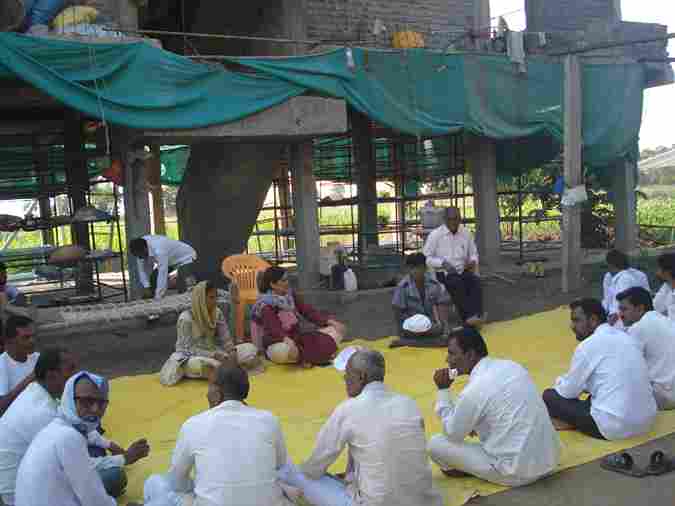
Jalna’s transformation: From 250 tankers a day to nil
Her NGO, headquartered in Ahmedabad, offered the rental prices of the costly machines required for the job by means of its partnership with the A.T.E. Chandra basis in Mumbai, whereas the locals contributed their bit by offering the diesel.
Her workforce labored to verify it translated into outcomes on the bottom. Though her NGO had been arrange a few years in the past with the aim of focussing on animal care, it had, actually, primarily focussed on saving and enhancing human lives in a rustic susceptible to pure and artifical calamities the place authorities intervention is commonly insufficient and even absent. Human beings, at some degree, took priority.
When Nutanben and her workforce started working in round 330-odd villages and talukas that comprise the Jalna district, the scenario was not significantly better than it was in Beed. Water was very scarce, many of the water our bodies within the area have been silted up or bone dry and tankers have been the one lifestyle.
After they began working, every tehsil — there are 8 in Jalna district — survived on 250 tankers per day. Farmers have been barely producing something since there was no water for farming; assembly the fundamental consumption wants was a wrestle.
Furthermore, when the workforce arrived within the district, villagers and locals have been extremely sceptical on whether or not such work might be completed with group participation and thru the efforts of an NGO.
“It was primarily seen as work solely the federal government may do,” explains Narayan Devkate, 55, a farmer in Pimparkhed, who tends to his 50-acre land parcel along with his two brothers. Of the 117-odd villages in his neighborhood, 78 had no water in any respect when the trouble started, he provides.
Painstakingly and with mild however persistent persuasion, the work started and ranged from desilting and rejuvenating small ponds, recharging borewells, naali kholikaran (veins of the river that have gotten crammed with silt and turned dry) and compartment bunding.
In consequence, a complete of 427 km of nullahs have been opened, 19 ponds have been introduced again to life and a complete of 79,7443 cubic metres of silt has been eliminated and carted within the final 6-7 years.
Over the past 4 years, work has began on cleansing and rejuvenating the 20 km Kundalika and Seena river, of which round 5 km has been completed up to now and a complete of 900,000 lakh cubic metre of silt and a complete of 405,000 cubic metre of rubbish has been pulled out and carted! To see the river flowing, even when solely partially, gave Nutanben and her workforce a spark of pleasure that only some different issues may handle!
However what is maybe solely pleasure and satisfaction for the NGO workforce engaged on the bottom, it’s a matter of a much better high quality of life for the farmers and the group residing there.
Laxman Sawade was rising round 5 quintals of cotton yearly on his seven acre farm and barely managing to make ends meet. In 2013, he took the initiative of making use of 300 trollies of silt on three acres of his land. Not solely has his cotton output gone up, he’s additionally rising grapes on his land since. General, his earnings has jumped to Rs 15 lakh a 12 months, serving to him construct a greater residence, purchase 2.5 extra acres of land, a tractor and a bike.
General, the notion that nearly nothing brings extra prosperity and hope than water safety has been amply bolstered by Jalna. Devkate says that three new factories have come up within the space, together with a water intensive sugarcane manufacturing unit, resulting in new employment alternatives within the district. In a area that has been bereft of just about any work alternatives, this, he argues, is what has helped herald an increasing number of takers for the continuing efforts.
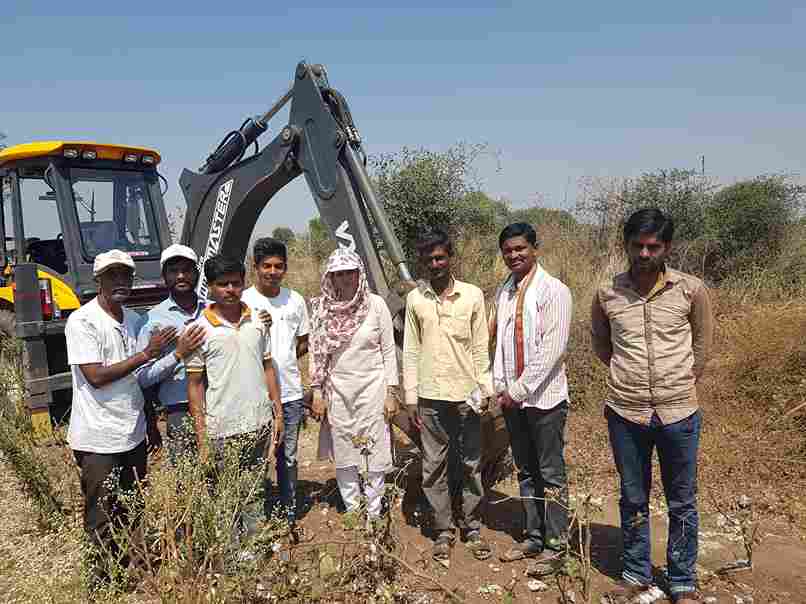
Making PPP work: Samast Mahajan, A.T.E. Chandra Basis and extra
For all these lamenting the failure of private and non-private partnerships in India, the water rejuvenation efforts of Maharashtra presents a beacon of hope. It was in 2013 that Bain Capital chairman Amit Chandra — who arrange and funds the A.T.E. Chandra basis — and his spouse, Archana, began questioning why regardless of lots of discuss and bluster, farmer suicides within the drought-hit state refused to abate.
It didn’t take rocket science to achieve a fast answer- poor rainfall = failed crop season = farmer debt = farmer suicide.
That’s after they got here throughout one other NGO already engaged on the straightforward mannequin they’ve since adopted- silt removing and rejuvenation of water our bodies. Major analysis completed by them confirmed that there are numerous water our bodies throughout the nation which have over time turn out to be defunct or unable to carry a lot water resulting from heavy silting.
The groundwater too fails to get recharged because the silt prevents the rainwater from reaching the underside. But when somebody eliminated the silt, the water physique might be rejuvenated and even higher the silt — which is often fairly fertile — might be utilized by farmers on their land to enhance productiveness.
From 2016 to 2019, the A.T.E CF, together with 22-odd companion organisations, labored extensively in Maharashtra to rejuvenate over 2,700 water our bodies, impacting round 4,200 villages.
The COVID-19 pandemic dampened their efforts however didn’t cease. In 2020 and 2021, work continued in Rajasthan and Karnataka. In 2022, the work picked up tempo as soon as once more and 916 water our bodies have been rejuvenated in 18 districts of Maharashtra, Rajasthan, Uttar Pradesh, Madhya Pradesh, some on the behest of Niti Aayog which had, by then, pulled in by the muse.
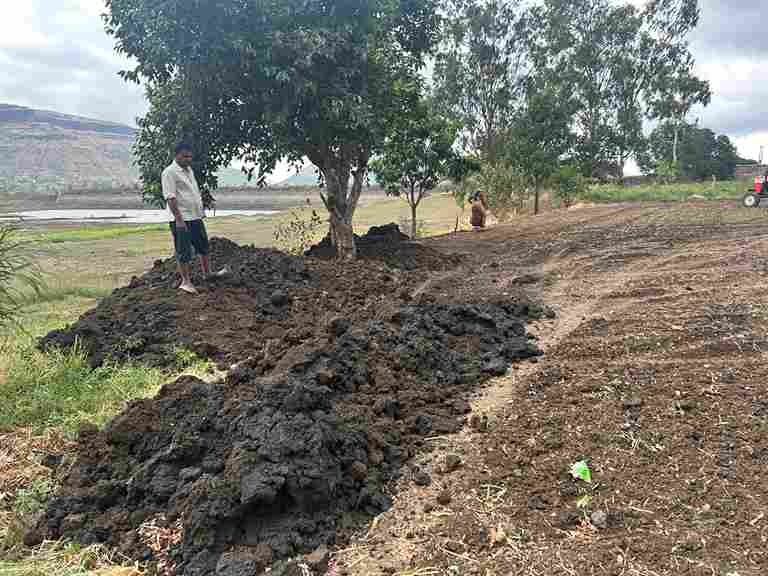
Niti Aayog buys in
It was in 2021-22 that the A.T.E CF workforce determined to strategy Niti Aayog which shortly purchased into the scheme. In June 2018, Niti Aayog had introduced out a report on “Composite Water Administration Index”, which mentions that India is present process the worst water disaster in its historical past and that just about 600 million persons are going through excessive to excessive water stress.
The report additional mentions that India is positioned at 120th amongst 122 nations within the water high quality index, with practically 70% of water being contaminated.
The mannequin offered by the muse to the Niti Aayog might be scaled in a short time at a fraction of the price to unleash water safety in drought susceptible areas. It was community-led with farmers bearing a portion of the price and aligns virtually completely with the Amrit Sarovar mission launched by the Indian authorities in April 2022 the place the plan is to rejuvenate and develop 75 water our bodies in every district of the nation.
The standard strategy of constructing new water our bodies, dams and canals is dearer, ecologically and environmentally damaging and infrequently results in massive scale displacement of the locals within the space.
In consequence, within the final two years, 500 water our bodies have been rejuvenated with monetary help from NITI Aayog. At the moment, pilot tasks are ongoing in Jharkhand, MP, Rajasthan and Maharashtra, with a view to extending this to all its aspirational districts and areas which can be water careworn.
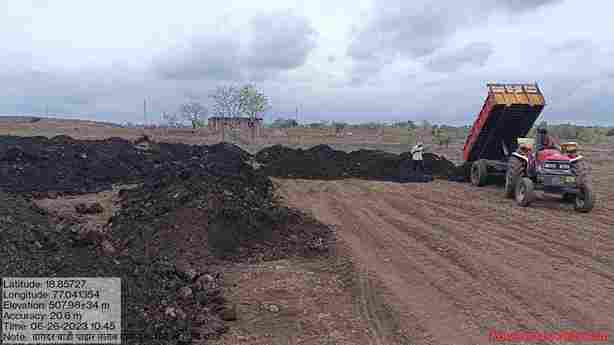
Maharashtra goes all out
Over the past 50 years, droughts and floods in Maharashtra have risen sevenfold and sixfold respectively. It was after the most recent devastating droughts confronted by the state in 2013-2016 that the state intensified its efforts on making defunct water our bodies purposeful.
A senior Maharashtra state authorities official says that drought has been one of many state’s best nemesis within the final decade or so since he has been posted and primarily based there.
The state authorities rejuvenated over 5,000 water our bodies throughout the state between 2017-2019, principally by means of the GDGS (Gaalmukt Dharan, Gaalmukt Shivar) Scheme. Presently, donors have been offering the rental costs for the machines for silt removing, the state paid for the diesel and the farmers for the carting of silt.
However extra just lately, confronted with the specter of El Nino and erratic rain patterns, the state determined it couldn’t watch for donors or different philanthropic funding and that it will fund the total effort by itself steam for now.
In April 2023, Rs 2,000 crore have been allotted to revive the scheme over the subsequent 5 years and over 100 NGOs have been pulled in to help. It’s anticipated to result in the excavation of round 44 crore cubic metres of silt and creating a further floor capability of 44,000 crore litres of water.
As well as, a subsidy of Rs 15,000 has been offered for small farmers for the primary time, to make sure that the silt can be utilized by them in addition to the larger farmers who can afford to cart it.
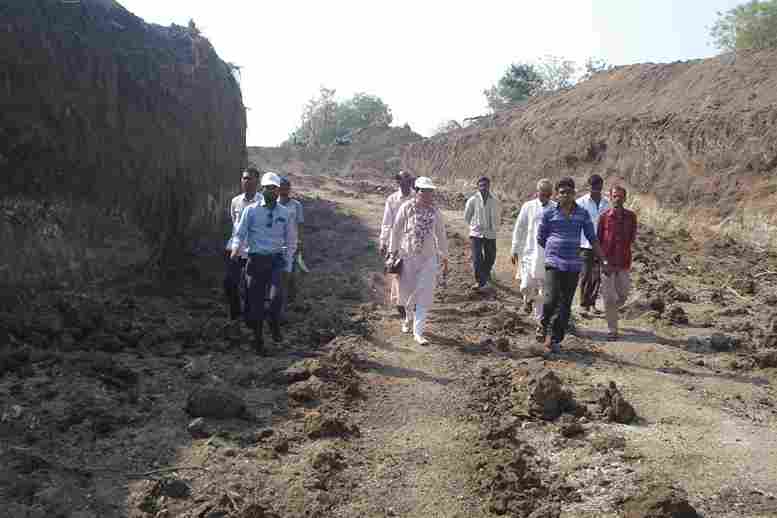
It takes two fingers to clap
Readers might nicely ask what the civil society’s contribution is in circumstances the place the whole funding is offered by the federal government. And the reply is – it takes each fingers to clap.
“As has been seen again and again, the tasks that work greatest are these the place the non-public and public sector come collectively,” says a former NITI Aayog official. He says that the non-public or civil society gamers deliver efficiencies and ranges of competence that authorities gamers typically lack. Chandra echoes this sentiment in reverse by saying that the size authorities can present, no non-public sector participant can match.
So even whereas the state authorities is keen to finance virtually the whole effort, the A.T.E. CF identifies, displays and assists the NGOs that work on the bottom. It has additionally lent its expertise app to the Maharashtra authorities to gather actual time information on all of the water rejuvenation websites throughout the state from the Mantralaya in Mumbai and to prioritise the place such work must begin immediately.
As well as, the muse additionally offers common weekly coaching for the nodal authorities officers with use of the app and any glitches which will come up. Moreover establishing a undertaking administration unit, the muse’s chief working officer (COO) Gayatri Nair Lobo, has made 24 area journeys to 6 states – Madhya Pradesh, Maharashtra, Rajasthan, Uttar Pradesh, Jharkhand and Karnataka since April 2022 alone. In a rustic as huge, numerous and sophisticated as India, little or no will be achieved from the glass and chrome edifices in Mumbai or Delhi.
In the meantime, Nutanben and her 8-10 member workforce stay resolutely focussed on their work which they estimate will want one other 2-3 years earlier than it turns into self-sustaining. She is aware of her frequent journeys from Mumbai to Aurangabad after which onwards into the nooks and crannies of Jalna and Palghar won’t be ending anytime in a rush.
Together with her filial tasks much less intense than previously, she will afford to deal with ameliorating the water woes she first encountered when she landed in Beed seven years in the past. By way of gratification, something she achieves in Mumbai pales compared.
Edited by Padmashree Pande. All footage sourced by the creator.
[ad_2]


